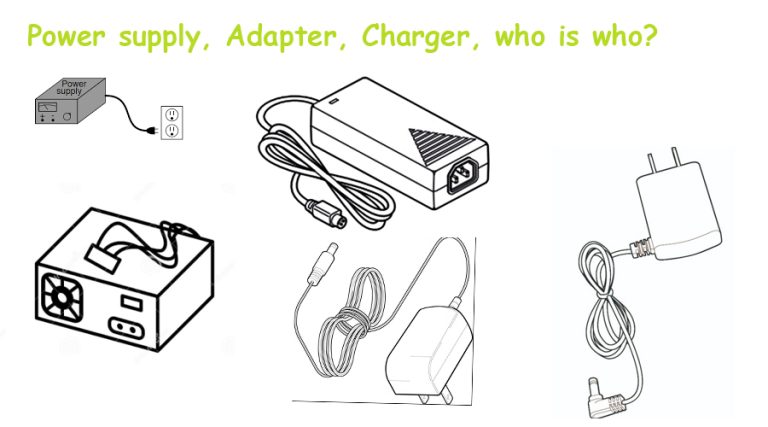Introduction
Power supplies and battery chargers are essential components of modern electronic devices, but they serve different purposes. Whether you’re powering your laptop, charging your smartphone, or using a power adapter for a home appliance, it’s important to understand the distinction between a power supply and a battery charger. This article will explain the functions of each and highlight their key differences, so you can make informed decisions when choosing the right solution for your device.
What is a Power Supply?
A power supply is a device that provides electrical power to an electrical load, such as a computer, television, or any other electronic device. It takes the electrical input (usually from an AC outlet) and converts it into the appropriate DC voltage and current needed to power the device.
- Function: The power supply ensures that a device receives a stable, constant flow of electricity in the correct voltage and current form for its operation.
- Types: There are various types of power supplies, such as linear power supplies, switching power supplies, and uninterruptible power supplies (UPS).
- Example: When you plug in a laptop charger, the power supply inside the charger converts the 110V/220V AC from the wall into the required DC voltage (like 19V) to power the laptop.

Key Characteristics:
- Converts AC to DC (most common)
- Constantly provides power to devices
- Designed for continuous operation
What is a Battery Charger?
A battery charger is a device specifically designed to supply electrical energy to recharge a battery. It delivers the required current and voltage to charge the battery, ensuring it reaches full charge and can store energy for future use.
- Function: A battery charger provides the necessary power to charge rechargeable batteries in devices like smartphones, laptops, electric vehicles, and power tools.
- Types: Battery chargers vary depending on the type of battery being charged, such as NiMH (Nickel-Metal Hydride), Li-ion (Lithium-ion), or Lead-Acid batteries.
- Example: A smartphone charger is a battery charger that provides power to the phone’s battery, enabling it to store energy for later use.
Key Characteristics:
- Charges batteries for energy storage
- Uses specific charging methods (e.g., constant voltage or constant current)
- Typically operates in cycles (charge/discharge)
Key Differences Between Power Supply and Battery Charger
- Purpose:
- A power supply continuously provides power to a device while it’s in use, ensuring the device operates effectively.
- A battery charger is used to recharge a battery so that it can store energy and power a device later.
- Functionality:
- A power supply converts incoming AC power into a usable DC form and regulates the output voltage and current.
- A battery charger uses specific charging algorithms to manage the charging cycle of the battery, ensuring it doesn’t overcharge or undercharge.
- Energy Flow:
- A power supply provides a constant flow of energy as long as the device is plugged in.
- A battery charger sends energy to the battery in a controlled manner and stops once the battery is fully charged.
- Continuous vs. Cyclical Operation:
- A power supply works continuously and operates as long as the device is on.
- A battery charger operates in a cyclical fashion: charge the battery, then stop once the battery is fully charged.
- Voltage and Current:
- A power supply typically outputs a steady voltage and current for the operation of the device.
- A battery charger adjusts the voltage and current according to the needs of the battery and charging stage.

When to Use a Power Supply vs. a Battery Charger?
- Power Supply: Use a power supply when you need a continuous, stable flow of power to an electronic device. Devices such as desktop computers, home appliances, and televisions rely on power supplies to operate.
- Battery Charger: Use a battery charger when you need to recharge a battery so that it can store energy and be used at a later time. This includes devices like smartphones, laptops, power tools, and electric vehicles.
Conclusion
While power supplies and battery chargers both provide electrical energy, they serve very different functions. A power supply ensures continuous operation of an electronic device, while a battery charger is designed to recharge batteries for future use. Understanding the differences between these two components will help you make better decisions when selecting the right equipment for your electronic devices, ensuring they operate efficiently and safely.
Are you interested in Learn how to choose the power adapter, please refer our link.




